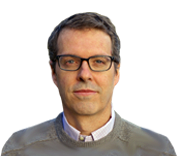One of the hallmarks of cancer is uncontrolled growth. But this growth depends on building blocks, proteins, that act as the structural and functional elements of cells. But to make more proteins, cells require more protein factories, or ribosomes.
A researcher in the University of Texas Southwestern Medical Center biophysics department is discerning the mechanisms cells use to manufacture ribosomes. He hopes to figure out how to muck up the assembly line in order to stop cancer from reproducing. Jan Erzberger was recruited in 2015 from ETH Zürich, in Switzerland, where he was a senior research fellow, with the help of a First-Time Tenure-Track Award from CPRIT.
Read More
One of the hallmarks of cancer is uncontrolled growth. But this growth depends on building blocks, proteins, that act as the structural and functional elements of cells. But to make more proteins, cells require more protein factories, or ribosomes.
A researcher in the University of Texas Southwestern Medical Center biophysics department is discerning the mechanisms cells use to manufacture ribosomes. He hopes to figure out how to muck up the assembly line in order to stop cancer from reproducing. Jan Erzberger was recruited in 2015 from ETH Zürich, in Switzerland, where he was a senior research fellow, with the help of a First-Time Tenure-Track Award from CPRIT.
Ribosomes are like little robots, gathering amino acids and stringing them together to assemble them into protein chains. “Think of an assembly line that’s completely run by robots, which are very flexible and can build whatever you want,” Erzberger says. “But if you decide in two weeks to have twice as many cellular building blocks available, the thing you have to make first is more robots. In a fast-growing cell, like cancer, you are always making more ribosomes.”
Erzberger uses yeast cells to study the biomechanics of ribosome synthesis, which uses essentially the same process that human cells use. “There are not many differences between ribosomes in baking yeast and you,” he says. “We’re trying to get the overall idea of the big picture in yeast because it’s faster, and then apply that to understanding human cells. We can make all the mistakes in the faster, cheaper system.”
Once the basic mechanisms have become clear, Erzberger says he can begin a much more targeted investigation of mammalian cells, to find the most vulnerable or easiest place to throw in a monkey wrench. “We’re trying to stop the production of ribosomes,” he says, “which should deep-six everything that is required for growth.”
He is taking advantage of recent breakthroughs in a technique called cryo-electron microscopy, or CryoEM, which allows him to see the structures of proteins without having to isolate and crystallize them first. CryoEM, he says, has advanced the field of microscopy in the past decade as much as the Hubble Space Telescope revolutionized astronomy when it was first launched. CryoEM changed the resolution level to make much smaller structures visible. He says CPRIT’s financial support was crucial for enabling him to make use of CryoEM.
Erzberger also studies the mechanisms that go awry when cancer cells start to grow unchecked. Functions that would normally cause the death of a cell at an appropriate time stop functioning. Erzberger is trying to figure out how this process works in normal cells in order to understand how it goes wrong in cancer cells. Essentially his lab is working on a two-pronged approach, he says, “One is to stop the production and the other is to bring back quality control.”
CPRIT directly funds the shared CryoEM facility at UT Southwestern. “The research environment here is fantastic,” he says. “The strong support for research makes a huge difference in the quality of the researchers Texas universities are able to recruit.”
Erzberger received his undergraduate degree in biochemical sciences from Harvard University and his Ph.D. in biochemistry & molecular biology from the University of California, Berkeley. He was a postdoctoral fellow there for a year before joining ETH Zürich as a postdoctoral fellow, becoming a senior research fellow there in 2012.
Read Less

